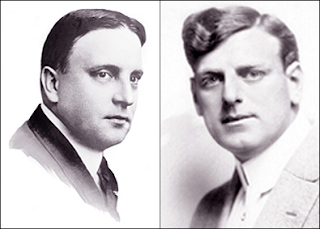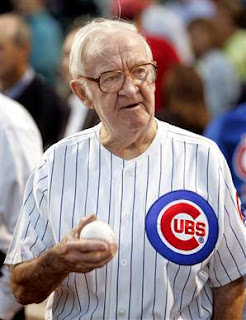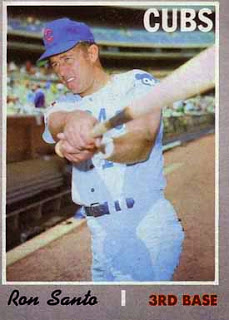Every Cub Ever (S)
Extra entries beginning with the letter S…
~Pat Sajak 1946 (Cubs fan 1946-Present)
He grew up in Chicago (born in 1946), attended Columbia College (left in 1968 to join the military), and returns to the town of his birth often. He’s also a huge baseball fan, which begs the question: Is he a Cubs fan or a Sox fan. The Chicago Reader posed that question to him last year and he responded… “You know, I get asked that a lot. I’m a fan of both teams. I’ve never understood why I had to hate one or the other. I grew up close enough to Comiskey that I could hear the fireworks after games, but I watched the Cubs on TV.” He went into a little more detail in 2009 to the MLB network…”I think what drew me to the Cubs is that they did something in the 1950s that was unheard of at the time. They would televise all of their home games. I would come home from school and instead of watching a cartoon or Jerry Springer, I would watch a baseball game. I’m not sure if Mr. Wrigley was cheap and wanted more television dollars, or (was) a visionary, but I think he created a lot of Cubs fans like me who would come home to watch the games. It’s hard to realize that in this ESPN era, televised games were pretty rare and a home-televised game was unheard of.” Among his favorite Cubs players: Ron Santo, Ernie Banks, Billy Williams. His favorite year? 1969. “I tend to remember more odd moments,” he once said, “like being in Wrigley with 721 people attending. That was a highlight. I’ve seen the Cubs on the losing end of a lot of exciting games. To me the most exciting season in Cubs history was 1969 with Leo Durocher. It was such a heartbreaker because it really looked like it was their year (and) they deserved to win. Then this upstart team from New York got so hot and, well, (for the Mets to win) the Cubs had to go in the opposite direction.” Needless to say, Sajak has returned to Wrigley Field numerous times, has thrown out the first pitch, and once even got a chance to sit in the Cubs booth with Harry Caray. “I met Harry fairly late in his career and he could not have been sweeter,” he explained to the MLB network. “It was funny — as you know, Harry would spend the game talking about ‘Misses Johnson’ in the hospital in Cedar Rapids while occasionally sprinkling in some play-by-play, and I made a gentle joke about it and he got serious, not defensive, but in an explanatory way. He said that he considered those fans to be very important (saying), “if I can lift their spirits while they are in the hospital (then) I’m more interested in that than what the last pitch was.” Like many of the old-time broadcasters, he knew that it was television and fans could see the game, so he did a ‘TV show.’ (The viewer) saw the game and heard Harry’s version of it. Some loved it and some did not, but you cannot deny that baseball is far less rich when it loses people of that generation.” He has since been asked to sing “Take Me Out to the Ballgame” during the seventh inning stretch, and he dedicated it to Harry. That’s a Cubs fan. That’s Pat Sajak.
~Becky Sarwate-Maxwell (Cubs fan since birth)
Becky Sarwate is the co-author of “Cubsessions” (Eckhartz Press, 2018). For Cubsessions, she and co-author Randy Richardson interviewed a diverse collection of some of the team’s most famous fans: actors, comedians, broadcasters, musicians, restauranteurs, athletes, journalists. Even those who are ubiquitous precisely because of their fandom. Cubsessions tells the story of divergent life paths – the roads taken, the failures experienced, and the successes reached – and how those paths all come together for a collective passion. Becky is a freelance writer contributing to a number of publications including The Broadway Blog, where she reviews Chicago theater productions, and Wrigleyville Nation, chronicling the highs and lows of lifelong Chicago Cubs fandom. She has been recognized eight times by the National Federation of Press Women for excellence in communications.
~Gale Sayers 1943–2020 (Bears in Wrigley, 1965-1970)
The greatest years of Gale Sayers football career were spent at Wrigley Field. He won the Rookie of the Year, scored six touchdowns in one game, and electrified the fans with his incredible open field moves. Sayers was a four-time Pro Bowler, a two-time rushing champion, the comeback player of the year, and his number 40 has been retired by the Bears. He also, unfortunately, badly hurt his knee–cutting his Hall of Fame career short. The movie about his relationship with Bears teammate Brian Piccolo “Brian’s Song” has made more grown men cry than any other movie ever made. (Photo: Topps 1969 Football Card)
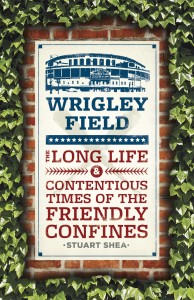 ~Stuart Shea (Cubs author)
~Stuart Shea (Cubs author)
Stuart was a contributor to the great book “Cubbie Blues: 100 Years of Waiting Until Next Year”, and he has contributed to this website too with this excellent post (10 Cubs To Forget), but his biggest contribution to Cubs lore was undoubtedly his book “Wrigley Field: The Long Life and Contentious Times of the Friendly Confines,” which should be in every Cub fan’s library.
~The Sianis Family (Cub Fans)
It all began with the original owner of the Billy Goat tavern William Sianis, who famously brought his pet goat Murphy to Game Four of the 1945 World Series at Wrigley Field. He was not allowed to bring the pet in, and supposedly placed a curse on the Cubs, saying they would never return to the World Series. The family tried to take the curse off many times (led by William’s nephew Sam), but it never worked. The Billy Goat tavern is now an institution in Chicago, and the Sianis family remains beloved…mostly because we all secretly knew there really was no curse.
~Scott Simon 1952 (Cubs fan 1952-present)
Scott Simon ia an author and NPR radio host, but he’s also a Cubs fan. How big of a Cubs fan is he? This is from official bio…”Scott is a native of Chicago and the son of comedian Ernie Simon and Patricia Lyons Simon. His hobbies are books, theater, ballet, British comedy, Mexican cooking and ‘bleeding for the Chicago Cubs.'” Simon also wrote a book that tells all about his Cubs love (in addition to his love of the other Chicago sports teams) called “Home and Away: Memoir of a Fan”. It was published in the spring of 2000, and topped the Los Angeles Times nonfiction bestseller list for several weeks. One of the best passages of that book was about the 1969 Cubs. After the Cubs won the World Series in 2016, he released a memoir entitled “My Cubs: A Love Story”. Scott Simon is no longer based here, and he is not really a Chicagoan any more, but can there ever be a doubt how deeply the Cubs virus has bored its way into his system?
~Gary Sinese 1955 (Cubs fan 1955-present)
He was born in Blue Island, but he grew up in Highland Park. As a young man he was one of the founders of the Steppenwolf Theatre in Chicago, but he really rose to fame playing the character Lt. Dan in the film Forrest Gump. But while we all knew he was from Chicago, with a birthplace like Blue Island, we couldn’t be sure if he was a Cubs fan or a Sox fan. The record over the past decade seems to have ended that speculation once and for all. In 2003, Gary was interviewed for the Cubs documentary “Chasing October,” and admitted something that surprised no one: He’s a die-hard Cubs fan. In 2004, Gary participated in the film “This Old Cub,” which told the gut-wrenching story of Ron Santo’s struggle with diabetes and his hopes for entry into Baseball’s Hall of Fame. Sinise recounted his memories of watching good ol’ #10 patrolling 3B for the Cubs in the sixties and early seventies. In 2009, he agreed to narrate the Cubs film “We Believe.” We believe, Gary. You are a true blue Cubs fan.
~Bob Sirott 1949 (Cubs fan 1949-Present)
Bob Sirott is not just a legendary Chicago broadcaster, he’s a huge Chicago Cubs fan. In his role as a disc jockey and talk show host on the radio, he often talked about his favorite moments at Wrigley Field and his favorite players. As a television journalist, he interviewed countless Cubs. When Harry Caray had his stroke in 1987, Bob was one of the people who filled in for him for a day. When Ernie Banks passed away, Bob wrote a beautiful tribute for the Chicago Tribune. He remains a constant presence at the Friendly Confines, and he’ll be a true-blue Cub fan to the very end. (Audio from Bob’s many interviews with Ernie has been posted on the WGN website)
~Bobby Skafish (Cubs fan since late 1950s)
Bobby was the afternoon drive disc jockey at 97.1 FM The Drive (and before that WXRT and the Loop) but he’s also a big Cubs fan. How big? This video explains it…
~George K. Spoor 1872 (Cubs fan)
Spoor was born in Highland Park and ran the only business in Chicago that was more glamorous than the famous Cubs. Not many people realize that Chicago was once the movie capitol of the world. That title lasted exactly one decade (1907-1917), and it was thanks to the movie studio known as Essanay Studios. The studio was located on Argyle Street in the Uptown neighborhood. The name “Essanay” comes from the initials of the studio’s founding partners: George Spoor and Bronco Billy Anderson. (Photo: Spoor on the left, Anderson on the right). At that time there was still quite a bit of open space to film in that neighborhood, and Essanay preferred to shoot outdoors if possible. They also built an indoor studio at that location. On the day the studio was opened (in 1907), the Cubs were in the midst of a magical season, on their way to their first World Series title. As the Cubs built one of the greatest dynasties in baseball history, Essanay was doing the same on Argyle Street. They had the world’s number one box-office star ( Charlie Chaplin), a glamor queen ( Gloria Swanson) and the most famous cowboy star in the world (“Bronco Billy” Anderson). Spoor was the businessman. He had run a news-stand and a film projector company. Two of his employees went on to start the Bell & Howell company, which made movie projectors. Chaplin left Essanay in 1916, which dealt a death blow to the company. A year later, the rest of the movie making world had moved to southern California for better weather (and year-round filming possibilities), and Essanay died a quick and painful death. By 1917, only the plain brick building on Argyle remained as a reminder of this era. Essanay studios was only operating in Chicago for eleven years, but in those years, the Cubs were in the World Series three times, and began playing their games in what is now known as Wrigley Field. It was a critical era in Cubs and Chicago history.
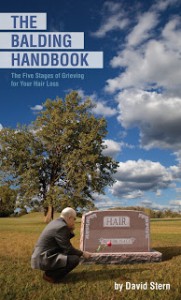 ~David Stern 1963 (Just One Bad Century)
~David Stern 1963 (Just One Bad Century)
David is the marketing director of Just One Bad Century, but he’s also a published author. His self-described spiritual masterpiece is called “The Balding Handbook: 5 Stages of Grieving for Your Hair Loss”. When asked to pick his all-time favorite Cubs he effortlessly ticks off a few: “Ryne Sandberg-when he takes his hat off–and of course, Mike Quade.” The Balding Handbook is available at Eckhartz Press.
~Justice John Paul Stevens 1920 (Cubs fan 1920-present)
He was a moderate Republican when he was nominated to the Supreme Court by President Gerald R. Ford in 1975, and is now considered the most liberal member of the Supreme Court, but Supreme Court Justice John Paul Stevens has other interests besides the law and politics. Namely Baseball. More specifically; Cubs baseball. Judge Stevens was born in Chicago in 1920. His father built the famous Stevens Hotel (which is now the Hilton), and John and his brothers posed as models for the bronze sculptures by the grand stairway. In 1932 at the age of 12, Stevens, who had become a huge Chicago Cubs fan, remembers sitting at Wrigley Field and watching Babe Ruth, in the fifth inning of Game 3 of the World Series, gesturing with his bat toward center field and hitting his famous “called shot” home run. He went to college in Chicago, graduating Phi Beta Kappa from the University of Chicago in 1941. During those years, he was a frequent visitor to Wrigley Field. During the 1950s and 1960s while he practiced law in Chicago, he continued to follow his favorite team. Starting in 1975, however, after becoming a Supreme Court Justice, his visits to Chicago became less frequent. He now lives in Washington & Ft. Lauderdale, Florida. But every now and then, he’ll still stop by the favorite place of his youth. In 2005, at age 85, he threw the first pitch at a Cubs-Reds game at Wrigley Field and got it right over the plate. (Photo by AP Photos/Jeff Robertson)
Videos and audio beginning with the letter S…
Harry Caray PBP about Rey Sanchez…
Harry with the PBP during that famous Sandberg game….
AUDIO: Santo explains why he chose to sign with the Cubs…
AUDIO: Santo hits 3 Homers in a game…
AUDIO: Santo and Harry talk about Ron’s toupee:
(AUDIO): Hank Sauer hits three dingers…
The last batter Ronald Reagan (as Grover Alexander) strikes out in “The Winning Team” is Cubs star Hank Sauer (portraying a Yankee)…
1908 Cub Jimmy Sheckard is honored long after his death…
It may be considered the greatest moment in Padres history, but it was the exact opposite for the Cubs and Lee Smith…
AUDIO: Willie Smith and Nate Oliver sing Pennant Feeling…
AUDIO: Sammy Sosa day at Wrigley…
A tale about Albert Spalding’s 1888 world tour…
Rick’s favorite baseball card beginning with the letter S..





